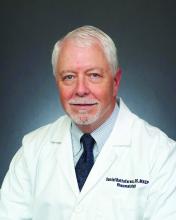The number of clinically active rheumatology providers in the United States grew more than 20% from 2009 to 2019, according to a new analysis.
The number of advanced practice providers (APPs) in rheumatology more than doubled during that same time. However, these numerical increases are not enough to meet the projected demand in care, the authors reported.
“Even though we found growth, and if that same growth continued, we’d still be well below the projected needs for the overall aging population of the United States,” lead author Melissa Mannion, MD, MSPH, a pediatric rheumatologist at the University of Alabama at Birmingham, said in an interview.
In a 2015 workforce study by the American College of Rheumatology (ACR), researchers projected that the supply of rheumatologists would decrease by 25% from 2015 to 2030, with an estimated shortage of over 4000 clinical full-time equivalent (cFTE) rheumatology providers.
While the previous study’s findings seem to contrast with this newest analysis, Dr. Dr. Mannion said the findings are complementary, with both studies using different data sources.
The newest findings were published online on February 24 in Arthritis & Rheumatology.
Leveraging Medicare Data
The ACR study estimated the adult rheumatology workforce and cFTEs using both primary and secondary sources, including published data from the American Medical Association and other professional societies, as well as electronic surveys of ACR members and rheumatology fellows in training.
By contrast, this newest study identified rheumatology providers using Medicare administrative data from 2006 to 2020, supplemented by national provider identifier taxonomy codes. Rheumatologists were considered “clinically active” if they provided care for at least five patients in 1 year. To account for rheumatology fellows, who can be categorized as internal medicine physicians, researchers also included internists who prescribed biologic or targeted synthetic disease-modifying antirheumatic drugs (DMARDs) to more than 10 patients a year.
The count also included APPs, both nurse practitioners (NPs) and physician assistants (PAs), who were attached to practices with only rheumatologists, internists, or one other specialty. Like physicians, APPs were included in the count if they prescribed more than 10 patients biologic or targeted synthetic DMARDs in a calendar year and billed at least five patients with a rheumatic condition per year.
Researchers also estimated the number of cFTEs for 2019, using a variety of assumptions to generate an upper and lower range.
Different Numbers, Complementary Conclusions
For the 2019 calendar year, researchers counted 5667 clinically active rheumatologists and 379 NPs/PAs.
This represented a 23% increase in rheumatologists and a 141% increase in the number of APPs in the rheumatology workforce from 2009. The active rheumatology workforce increased by about 100 providers per year over the study period, although growth flattened off in more recent years.
The estimated cFTEs for 2019 ranged from 3457 to 5396, which are “comparable” to the projected 2020 cFTE estimates made in the ACR 2015 workforce study: 3888 to 5777 cFTEs.
Daniel Battafarano, DO, chair of the ACR Workforce Solutions Committee, agreed with Dr. Mannion that these findings complement each other, telling a similar story “but with different numbers,” he told this news organization. Dr. Battafarano, a professor of medicine at the Uniformed Services University of the Health Sciences, Bethesda, Maryland, led the ACR workforce study.
“Both studies project estimates of rheumatology providers and workforce trends, but neither study can claim accurate numbers of rheumatology providers due to the true limitation of either workforce study model,” he said.
The ACR study began with a higher count of rheumatologists, estimating 6013 practicing providers in 2015, while Dr. Mannion’s team calculated 5474 providers for the same year. The ACR study projected that provider numbers would fall to 5886 by 2020, which was higher than the 2019 count in this most recent study.
Dr. Battafarano noted that the studies also dealt with different time frames: While the ACR study used 2015 data to project trends in 5-year increments, this most recent study looked trends in the previous decade.
“We found an increase over time, although toward the end of our study — from 2019 to 2020 — we did have a drop off in number of providers, so maybe we are finding the beginning of what [the ACR researchers] anticipated, or maybe that will be corrected in the future,” Dr. Dr. Mannion said. “I think that our estimates really coordinate with what they found just using a different data source.”



